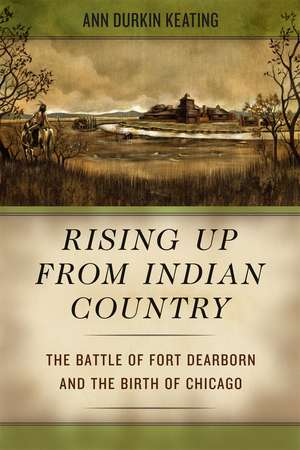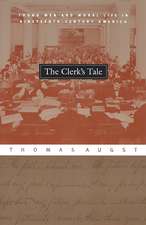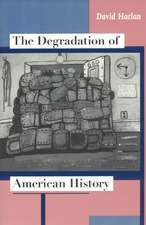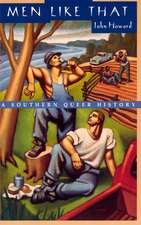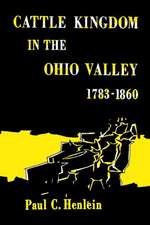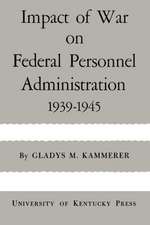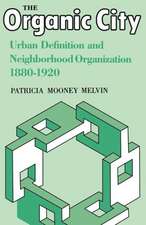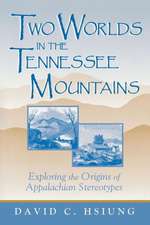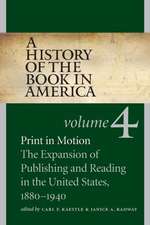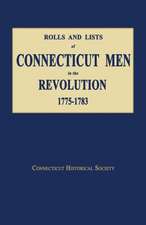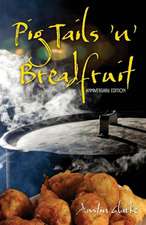Rising Up from Indian Country: The Battle of Fort Dearborn and the Birth of Chicago
Autor Ann Durkin Keatingen Limba Engleză Paperback – 3 oct 2019
These events are now seen as a foundational moment in Chicago’s storied past. With Rising up from Indian Country, noted historian Ann Durkin Keating richly recounts the Battle of Fort Dearborn while situating it within the context of several wider histories that span the nearly four decades between the 1795 Treaty of Greenville, in which Native Americans gave up a square mile at the mouth of the Chicago River, and the 1833 Treaty of Chicago, in which the American government and the Potawatomi exchanged five million acres of land west of the Mississippi River for a tract of the same size in northeast Illinois and southeast Wisconsin.
In the first book devoted entirely to this crucial period, Keating tells a story not only of military conquest but of the lives of people on all sides of the conflict. She highlights such figures as Jean Baptiste Point de Sable and John Kinzie and demonstrates that early Chicago was a place of cross-cultural reliance among the French, the Americans, and the Native Americans. Published to commemorate the bicentennial of the Battle of Fort Dearborn, this gripping account of the birth of Chicago will become required reading for anyone seeking to understand the city and its complex origins.
Preț: 148.37 lei
Nou
Puncte Express: 223
Preț estimativ în valută:
28.40€ • 29.21$ • 23.56£
28.40€ • 29.21$ • 23.56£
Carte disponibilă
Livrare economică 28 ianuarie-11 februarie
Preluare comenzi: 021 569.72.76
Specificații
ISBN-13: 9780226678580
ISBN-10: 022667858X
Pagini: 320
Ilustrații: 35 halftones, 14 maps
Dimensiuni: 152 x 229 x 25 mm
Greutate: 0.43 kg
Editura: University of Chicago Press
Colecția University of Chicago Press
ISBN-10: 022667858X
Pagini: 320
Ilustrații: 35 halftones, 14 maps
Dimensiuni: 152 x 229 x 25 mm
Greutate: 0.43 kg
Editura: University of Chicago Press
Colecția University of Chicago Press
Notă biografică
Ann Durkin Keating is the Dr. C. Frederick Toenniges Professor of History at North Central College in Naperville, Illinois. She is coeditor of The Encyclopedia of Chicago and the author of several books, including Chicagoland: City and Suburbs in the Railroad Age and Chicago Neighborhoods and Suburbs: A Historical Guide, both published by the University of Chicago Press.
Cuprins
JOHN KINZIE TIMELINE
GENERAL TIMELINE
A MOBILE CAST OF CHARACTERS
LIST OF MAPS
PREFACE: JOHN KINZIE’S WORLD
ACKNOWLEDGMENTS
GENERAL TIMELINE
A MOBILE CAST OF CHARACTERS
LIST OF MAPS
PREFACE: JOHN KINZIE’S WORLD
ACKNOWLEDGMENTS
INTRODUCTION Chicago in the Indian Country of the Western Great Lakes
PART ONE THE UNITED STATES AND THE INDIAN COUNTRY OF THE WESTERN GREAT LAKES
ONE John Kinzie and the Traders in the Indian Country of the Western Great Lakes, 1763–1812
TWO The Greenville Treaty and the American Era, 1789–1800
PART TWO FORT DEARBORN AND TIPPECANOE, 1803–1811
THREE President Jefferson and the Founding of Fort Dearborn, 1803–1804
FOUR Kinzie & Forsyth, at Chicago and Peoria, 1803–1812
FIVE President Jefferson, Main Poc, and the Founding of Tippecanoe, 1808–1811
SIX Battle of Tippecanoe, November 1811
PART THREE IN THE WAKE OF THE BATTLE OF TIPPECANOE, SPRING 1812
SEVEN Planning for War, Spring 1812
EIGHT John Kinzie’s Ambiguous Loyalties and a Forgotten Murder, May–June 1812
NINE The War Begins, June–July 1812
TEN The Potawatomi Attack, August 15, 1812
PART FOUR IN THE AFTERMATH OF AUGUST 15, 1812
ELEVEN John and Eleanor Kinzie’s Neighbors, August 1812
TWELVE Captors and Captives, Fall 1812
THIRTEEN A Savage Fall: 1812 in the West
FOURTEEN 1813: Shifting Allegiances
PART FIVE AFTER THE WAR OF 1812
FIFTEEN The End of Indian Country in the Neighborhood of Chicago, 1816–1829
SIXTEEN Kinzie’s Retreat to Chicago, 1816–1828
SEVENTEEN The 1833 Treaty of Chicago
EPILOGUE Why It Was Not a Massacre
NOTES
INDEX
PART TWO FORT DEARBORN AND TIPPECANOE, 1803–1811
THREE President Jefferson and the Founding of Fort Dearborn, 1803–1804
FOUR Kinzie & Forsyth, at Chicago and Peoria, 1803–1812
FIVE President Jefferson, Main Poc, and the Founding of Tippecanoe, 1808–1811
SIX Battle of Tippecanoe, November 1811
PART THREE IN THE WAKE OF THE BATTLE OF TIPPECANOE, SPRING 1812
SEVEN Planning for War, Spring 1812
EIGHT John Kinzie’s Ambiguous Loyalties and a Forgotten Murder, May–June 1812
NINE The War Begins, June–July 1812
TEN The Potawatomi Attack, August 15, 1812
PART FOUR IN THE AFTERMATH OF AUGUST 15, 1812
ELEVEN John and Eleanor Kinzie’s Neighbors, August 1812
TWELVE Captors and Captives, Fall 1812
THIRTEEN A Savage Fall: 1812 in the West
FOURTEEN 1813: Shifting Allegiances
PART FIVE AFTER THE WAR OF 1812
FIFTEEN The End of Indian Country in the Neighborhood of Chicago, 1816–1829
SIXTEEN Kinzie’s Retreat to Chicago, 1816–1828
SEVENTEEN The 1833 Treaty of Chicago
EPILOGUE Why It Was Not a Massacre
NOTES
INDEX
Recenzii
“[O]pens up a fascinating vista of lost American history. . . . It's a great story, and Ms. Keating's neutral, unemphatic prose makes it register all the more clearly.”
“[An] informative, ambitious account. . . . On bookshelves in time to honor the bicentennial of the Fort Dearborn battle, Keating’s well-researched book rights some misconceptions about the old conflicts, the strategies of the whites and Indians to keep their land, and how early Chicago came to exist.”
"Keating wants the people of Chicago to understand their origins more fully so that the first star on the city’s flag can represent the intercultural history of Chicago more than a misunderstood battle. But this book provides something just as important for a wider audience. Rising Up from Indian Country adds depth and breadth to an understanding of the geographic, social, and political transitions that occurred on the shores of Lake Michigan in the early 1800s."
“How did Chicago stop being Indian Country and become American? Ann Durkin Keating has recast that struggle into a story far more complex than the conventional ‘manifest destiny’ tale. Well researched and written, this book is an eye-opening account of Chicago's earliest, most contested days.”
“Ann Keating has taken on the least explored area of Chicago history—its raucous beginnings—and brought it magnificently to life. The book is a landmark work, deeply researched and vividly written.”
“Ann Keating has given us a new three-dimensional picture of Chicago’s founding. Rising Up from Indian Country paints a compelling picture of Chicago’s Indian Country origins and skillfully describes the tragedy at Fort Dearborn from the perspective of all who participated. This is a dramatic story that invites readers both to absorb new facts about the past and to reflect upon their meaning.”
“Rising Up from Indian Country is a masterful study of Chicago’s founding story. Ann Durkin Keating displays her ample skills as a historian, tackling the city’s frontier experience and exploring the roles of the major players, especially those of John Kinzie and of Native Americans during this complex early period. She has cut through the fog of legend to give us a valuable look at Chicago when it was still Indian Country.”
"Keating presents an excellent addition to the interpretation of Chicago’s early history while at the same time providing a reminder to all historians that early border societies were very complex."
